Text
Looking toward Kvalvika beach on Moskenesøya, Norway


Some beachcombers aren't looking for a tropical paradise—instead, they seek out remote stretches of sand…
On an island above the Arctic Circle
Trails curl around these stark mountains, and each path seems to end in another amazing view.
Visit here with plenty of photo storage space
Hike around the northern mountains of Moskenesøya and you'll eventually reach the fantastically isolated strip of sand we can see in our image. Kvalvika beach is just one many spots on this island where jagged cliffs meet a slate blue fjord, creating tableaus of gargantuan proportions. The scenery in this part of the world seems exclusively super-sized: Moskenesøya is part of the Lofoten Islands, an archipelago lying off the coast of Norway and renowned for its staggering scenery. As hardscrabble as Kvalvika beach appears, it's in a relatively protected bay on the northeast coast. Venture to the island's wild west coast and you'll find terrain lashed by violent storms blown in from the Norwegian Sea. There's little else on this shore—harsh weather drove the last settlers out in the 1950s.
© Daniel Bosma / Moment / Getty Images
1 note
·
View note
Text
Blackrock Castle in Cork, Ireland
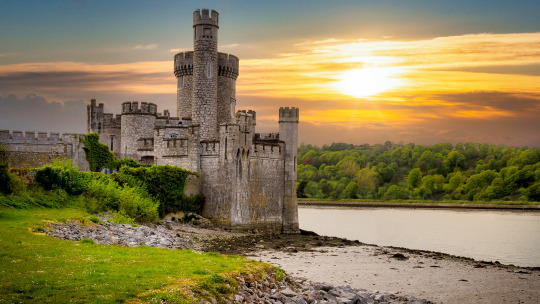

In the 16th century, this spot was chosen as the place to build a fort to protect against pirates, and now…
It's a place where past, present, and future meet
If one castle doesn't strike your fancy in this green and glorious country, you're in luck because…
There are a whole lot more to see
Reportedly, it was 'pirates and other invaders' that spurred the people of Cork to petition Queen Elizabeth I for a defensive fort to be built on the banks of the River Lee. The original coastal fortification, built in 1582, was later destroyed by a series of fires. The fairy tale-like castle we see today is not as old as it looks: following a fire in 1827, Blackrock Castle was rebuilt in a neo-Gothic style to echo a bygone era. Of special note is Blackrock Castle's connection to the stars. Although not visible in our image, a small observatory sits atop the castle. Since opening in 2007, Blackrock Castle Observatory has been a hub of research, and a unique learning experience for Cork's schoolchildren and the wider public.
© Patryk Kosmider/ Adobe Stock
2 notes
·
View notes
Text
The Wave rock formation in Arizona, USA


Far from the ocean is a 'wave' made not of seawater but of sandstone, and it's so popular that to visit it…
You need to win the lottery
There's plenty to see in the vast Vermilion Cliffs National Monument, but this expanse of striped sandstone…
Just might top the list
The jewel among the striking, spiralling sandstone formations of Coyote Buttes North is 'The Wave', the undulating patch of red ripples featured in our image. By showing you this coveted sight, we're saving you a bit of an ordeal. To get a close-up view of this whorled sandstone formation in the northern Arizona wilderness, you'd have to navigate a rugged and mostly trail-free hiking route in typically scorching temperatures. You'd also need to have a permit in your pocket. To protect the landscape, only a small number of permits are available, offered through a daily lottery. But maybe for you the journey is at least as important as the destination? If so, this is just one hike of many in the expansive Vermilion Cliffs National Monument, which protects nearly 300,000 acres of canyonland.
© Bernd Grundmann / Huber / eStock Photo
3 notes
·
View notes
Text
Sardinia, Italy
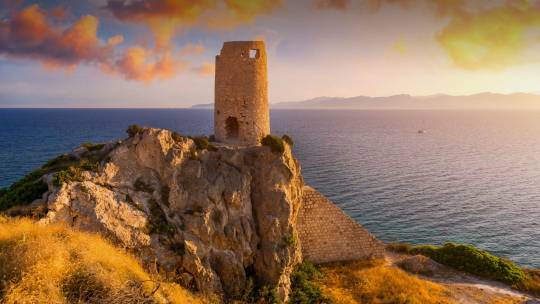

© DaLiu / Shutterstock
3 notes
·
View notes
Text
Waterfall in Croatia


© Iakov Kalinin / Shutterstock
2 notes
·
View notes
Text
A view to Angels Landing in Zion National Park, Utah, USA

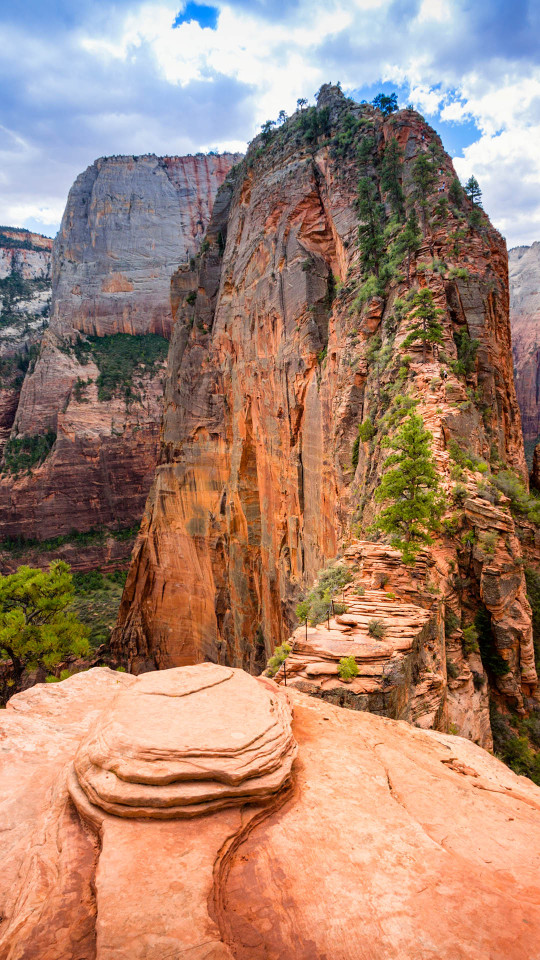
The trail leading up to this spot may at times feel much longer than its few miles, but there's definitely…
A big, beautiful payoff
A section of the hiking path that leads to this breathtaking vista is full of switchbacks.
Or you can call them 'wiggles'
Angels Landing stands nearly 460 metres tall in Utah's Zion National Park. Hikers with a firm constitution can make their way up the narrow trail to the summit—sometimes with just a chain-rail as a guide. But oh, what a view for those who make the effort: Zion Canyon yawns below. In 1926, Walter Ruesch, the first superintendent of the park, oversaw the construction of a section of the Angels Landing Trail. Although he had no previous engineering experience, Ruesch planned the steep 21-switchback path out of Refrigerator Canyon up to Angels Landing. The section of the trail, now affectionately called Walter's Wiggles, was first built to enable horse access to Cabin Spring.
© theasis / iStock / Getty Images
2 notes
·
View notes
Text
Tabuk, Saudi Arabia
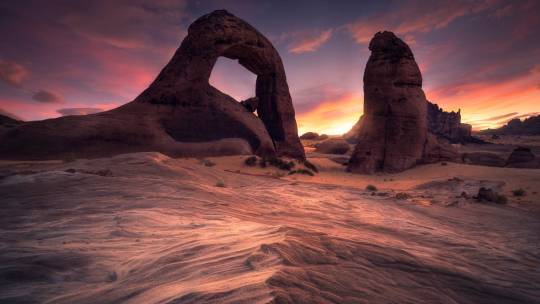
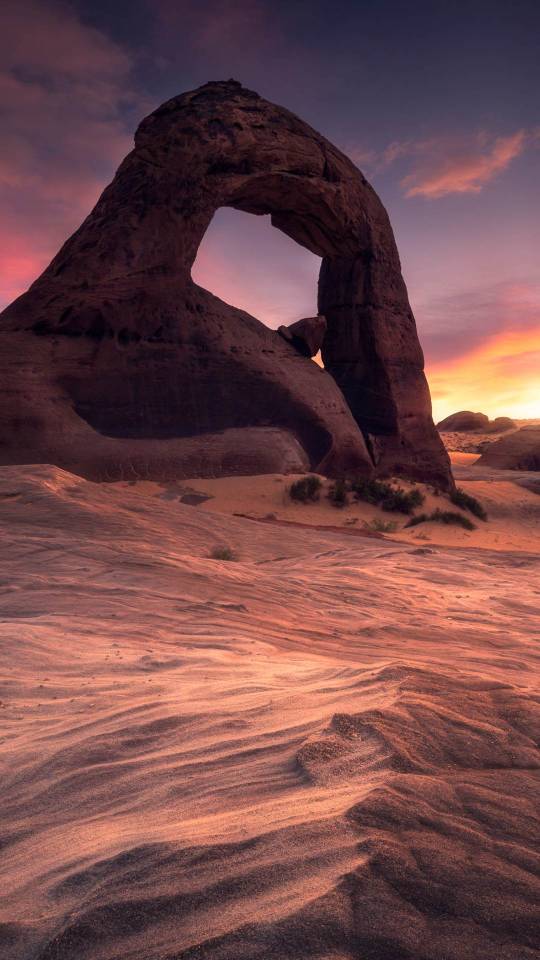
© Faisal Aljrf / EyeEm / Getty Images
2 notes
·
View notes
Text
Side Pike at Lingmoor Fell in Cumbria, Lake District
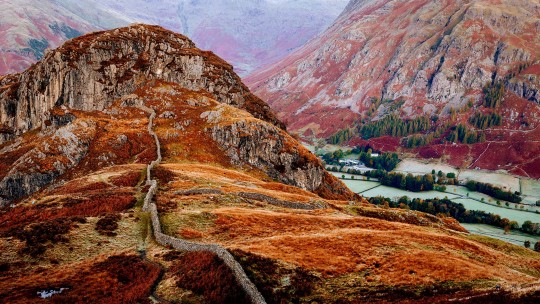

From walks to hikes to grueling hill runs, there are lots of ways to get around this incredible landscape.
You'll definitely want to stop and admire it
The slender stone wall running up the center of that slope is locally known as The Great Wall of Lingmoor.
This place is great wherever you look
Fells and moors make up much of the landscape here in northwest England's Lake District National Park. But there are also a few pikes, and a prominent example is featured in our image: we're looking at Side Pike from Lingmoor Fell, which is its parent summit. This is a countryside full of drama, where heather-covered volcanic spurs rise high above wide river valleys. Throughout the year, this stark and spectacular terrain attracts climbers, hikers and casual ramblers of all fitness levels. Of special note are the fell runners who often hold races in the area. Also known as hill running, the arduous sport is said to have begun here among the craggy peaks of the Lake District.
© joe daniel price / Moment / Getty Images
1 note
·
View note
Text
Footbridge in Tsitsikamma National Park, South Africa
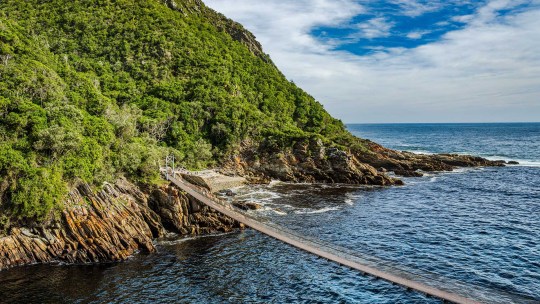

A long skinny suspension bridge crosses Storms River as it empties into the Indian Ocean at a coastline…
That redefines the word 'rugged'
Take two national parks, add a marine reserve, and sprinkle in some tidal lagoons and estuaries:
This is the delicious scenic result
The slender footbridge we see suspended across the bottom of our image crosses the mouth of Storms River as it empties into the Indian Ocean. The spot is a suitably dramatic finish to a spectacular national park. Situated in South Africa’s Garden Route, the park features swift rivers, deep ravines and thickly forested hills. And where the national park ends, another nature reserve begins: the Tsitsikamma Marine Protected Area covers the rugged shoreline and a portion of the ocean environment offshore. If that weren’t enough pristine goodness to keep any explorer happy, Tsitsikamma was combined in 2009 with nearby Wilderness National Park and other lands to form the Garden Route National Park . The result is 470-square-miles of perhaps the most pristine and impressive landscapes (and seascapes) in South Africa.
© Arnold.Petersen / Shutterstock
1 note
·
View note
Text
Bran Castle in Transylvania, Romania

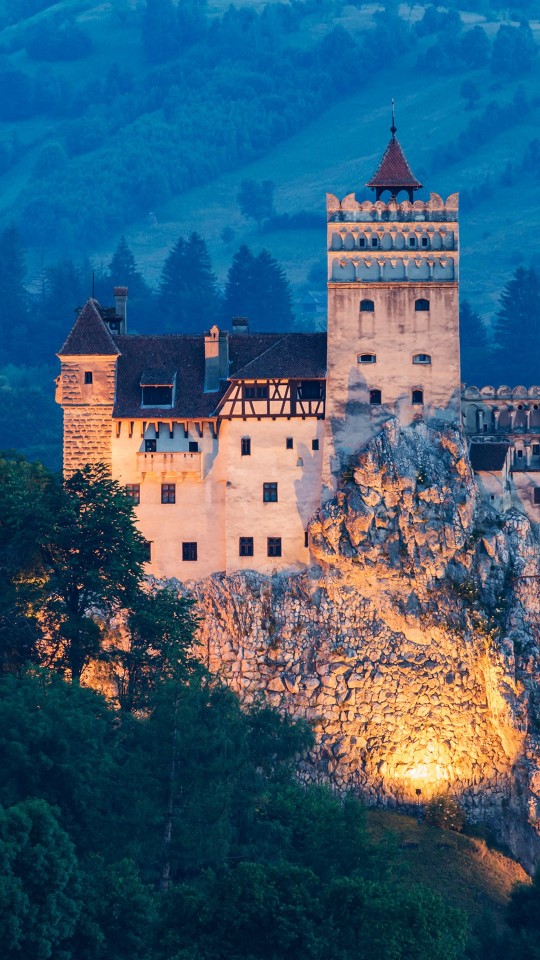
A fortress castle with medieval origins appears as if it's grown directly out of the rock it sits upon.
Legends have grown up around this hilltop citadel
Linked to a fictional figure based on an infamous ruler of the region, this castle may not be Dracula's…
But it sure looks the part
Looking like it's been carved from the cliffs it's planted on, Bran Castle in Transylvania is the very picture of 'spooky'. Although much history has passed through and around this mediaeval fortress, one infamous historical figure—once intimately linked to the castle—is now thought to have never set foot in it. 'Dracula's Castle', as the Romanian tourist board began calling Bran Castle in the 1970s, wasn't the home of Vlad the Impaler, the brutal 15th-century ruler of Wallachia. And Bram Stoker, author of the novel that Vlad inspired, didn't base his Dracula's Castle on this castle. (One of Vlad's actual lairs was Poenari Castle, a mountaintop ruin about two hours west.) While it turns out Bran Castle has little to do with the bloodsucking Count, it most certainly looks the part from the outside, and was recently refurbished on the inside.
© Jeremy Woodhouse / DIgitalVision / Getty Images
1 note
·
View note
Text
Kogel Bay and Kogelberg Nature Reserve, South Africa
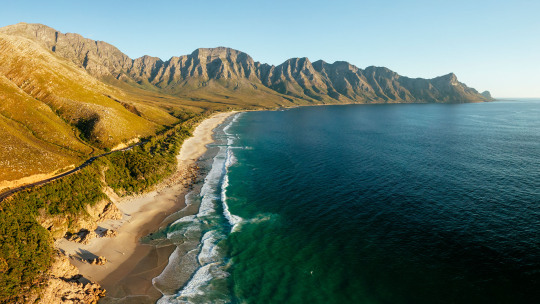
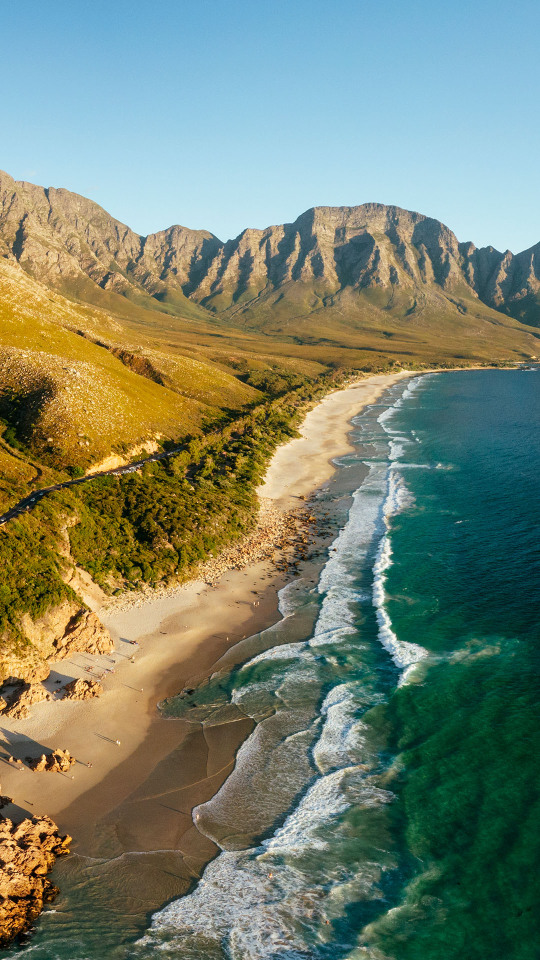
Here, the surf of Kogel Bay washes a dramatic shoreline bordered by rugged sandstone mountains that protect…
One of the most biologically diverse spots on Earth
They're unusual, and there are lots of different kinds of them, and many are only found in this place.
They also happen to be very photogenic
The Kogelberg Mountains make a dramatic backdrop for the deep blue of Kogel Bay, close to the eastern edge of Cape Town in South Africa. Along this coastline, and extending inland across the mountains, is a nature reserve of exceptional biodiversity. Plenty of animals make their home in the reserve, but it's the plants that may be Kogelberg's most extraordinary treasure: it's believed that the concentrated floral diversity here is the greatest in the world. Roughly 1,600 species grow within the nature reserve's 7,400 acres. As part of the Kogelberg Sandstone Fynbos ecosystem, many of these plants are found nowhere else on Earth. Although the nature reserve's coastline is open to exploration—and offers one of the great scenic routes via Clarence Drive—much of the mountainous interior is off-limits to visitors. This helps keep the ecological balance tipped in favour of the flowers.
© Ben Pipe / Sime / eStock Photo
1 note
·
View note
Text
Peggy's Cove lighthouse, Nova Scotia


© Joe Regan / Moment / Getty Images
3 notes
·
View notes
Text
Glen Canyon National Recreation Area, Utah
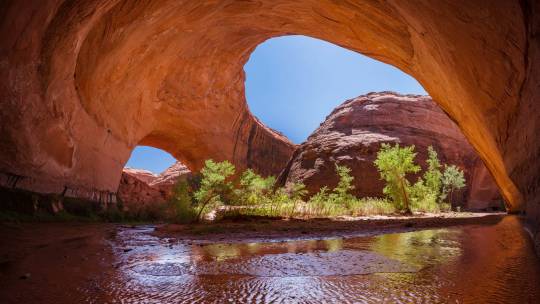
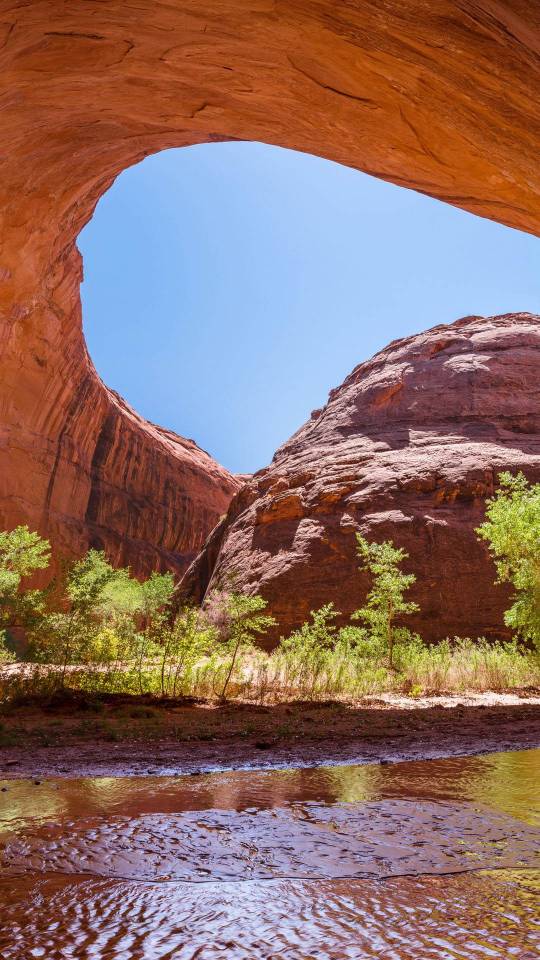
© Matthew Connolly / Shutterstock
2 notes
·
View notes
Text
Aerial view of Banana Beach on the island of Príncipe


Swaying palms, a curved stretch of sand, and a reef system lying just offshore are only a few of the charms…
On this island of discovery
We've got the bird's-eye view of Banana Beach, one of the prettiest parts of this island's coastline.
But really, the whole place looks delicious
Lying in the Gulf of Guinea off the west coast of Africa is the island nation of São Tomé and Príncipe, made up of two main islands and a scattering of roughly a dozen other smaller islands. Our aerial image centres on Banana Beach, a popular destination on Príncipe, the smaller of the two main islands. From this angle, we can see a bit of why this stretch of sand was named after the long, curved fruit. And we can also glimpse the large reef lying just offshore; no surprise that this part of Príncipe is a snorkeller's paradise. Príncipe island is known for something besides its scenery: during the total solar eclipse in 1919 , English astronomer Arthur Stanley Eddington led an expedition to Príncipe to observe the event. It was here that Eddington became the first to verify Albert Einstein's theory of relativity by photographing the gravitational deflection of starlight.
© Henning Marstrand / Design Pics
1 note
·
View note
Text
Diamond Head on Oahu island, Hawaii, USA
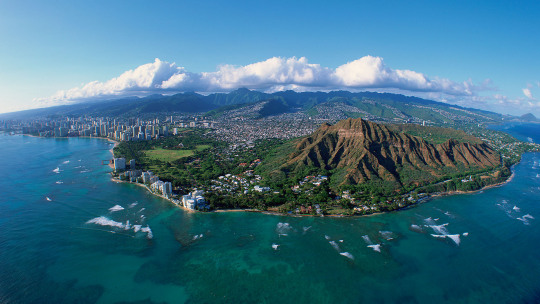
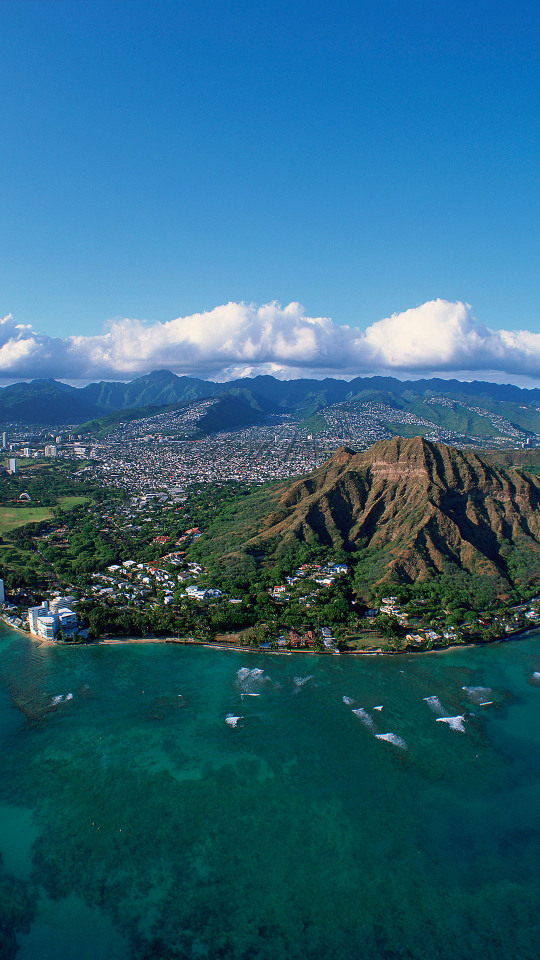
Long ago, sailors saw something glimmering on a peak and thought it might be the shine of diamonds.
And that's how this place got its name
Visitors to that mountain often hike to a high ridge on its crater to catch some incredible views.
Luckily, you don't even have to break a sweat
Though Hawaiians may know it by its traditional name of Lē'ahi, most tourists and maps call the large mountain in our image Diamond Head. The volcano with the wide ridge got its English name from 19th-century sailors, who saw glittering calcite crystals on the ridge and thought they'd struck it rich. Geologists estimate that the volcanic tuff cone on the south shore of Oahu formed about 300,000 years ago in a relatively short, explosive eruption. Today, visitors can hike along the inside slope of the crater and reach the volcano's summit to catch spectacular views of the rest of Oahu and the Pacific Ocean.
© Douglas Peebles / Corbis Documentary / Getty Images
1 note
·
View note
Text
Yellow-billed cardinal in the Pantanal, Brazil
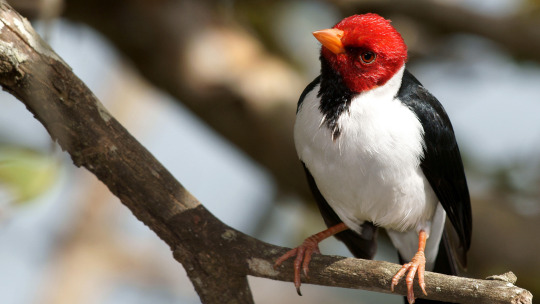
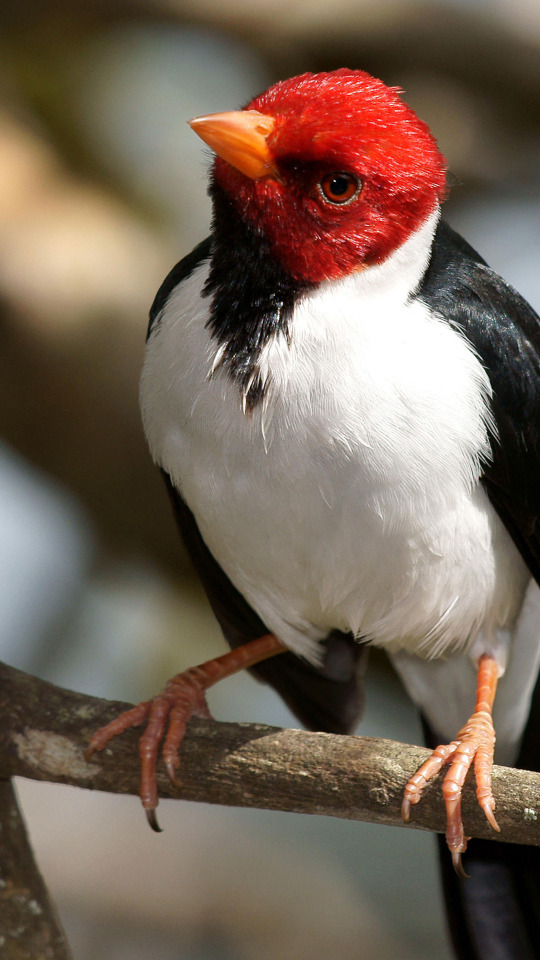
Plumage in this part of the world is usually bold and beautiful, so this bird fits right in with…
The Pantanal's fine-feathered crowd
Within a vast region of wetlands and nature preserves, you'd expect to see lots of colorful birds, right?
Your guess is entirely correct
The largest wetland area in the world isn't a bad place for a bird to be, and there are plenty of birds in the Pantanal. Situated mostly within the Brazilian state of Mato Grosso do Sul, these flooded grasslands are home to more than 450 bird species. While some of these are endangered—for example, the hyacinth macaw—the yellow-billed cardinal flourishes in large numbers here. Contrary to its name, the yellow-billed cardinal isn't closely related to the cardinal family of birds, Cardinalidae. In South America, many birds with 'cardinal' in their names are actually part of the Thraupidae family, commonly known as tanagers. With that ornithology lesson out of the way, we can simply admire the beautiful colouring of the boldly marked yellow-billed cardinal.
© AGB Photo Library / Alamy Stock Photo
0 notes
Text
Haoshang Bridge in Leshan, China

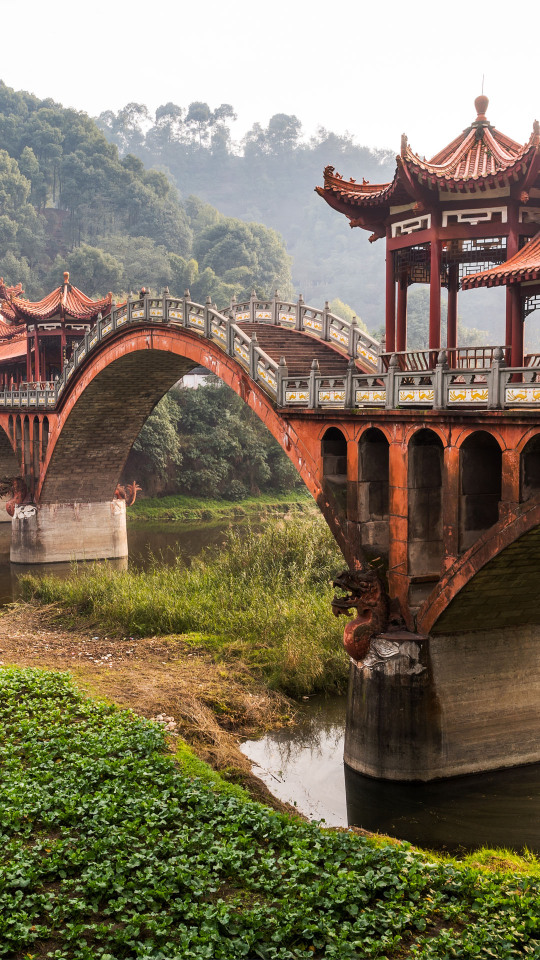
Beyond the edge of this scenic area towers the skyline of a large city, but when you're near this bridge…
You may feel you've traveled back in time
As if this elaborate stone span wasn't enough of a draw for photographers, not far from here rises…
The world's tallest pre-modern statue
At the meeting of two major rivers in Sichuan province is Leshan, a city that’s home to more than 3 million people. Yet on the outskirts of the metropolitan centre, the scene shifts to one that appears thousands of years old. The Mount Emei Scenic Area, a UNESCO World Heritage Site, features the Leshan Giant Buddha, said to be the world’s tallest pre-modern statue. Carved from a cliffside in the 8th century, it rises an astonishing—yet somehow still serene—71 metres high. Not far from the monumental statue is the red stone span we see in our image: Haoshang Bridge. When folks are finished visiting the Giant Buddha, they can cross the picturesque bridge to view the large WuYou temple, as well as a cave complex and a museum of Buddhism.
© Philippe LEJEANVRE / Moment / Getty Images
1 note
·
View note